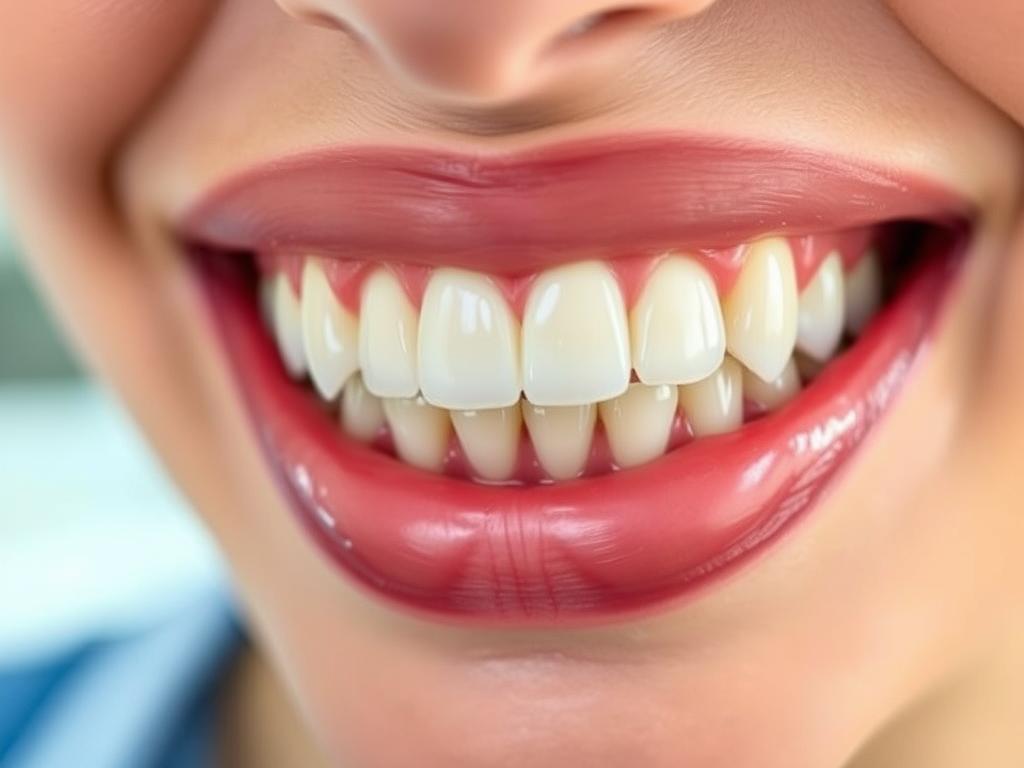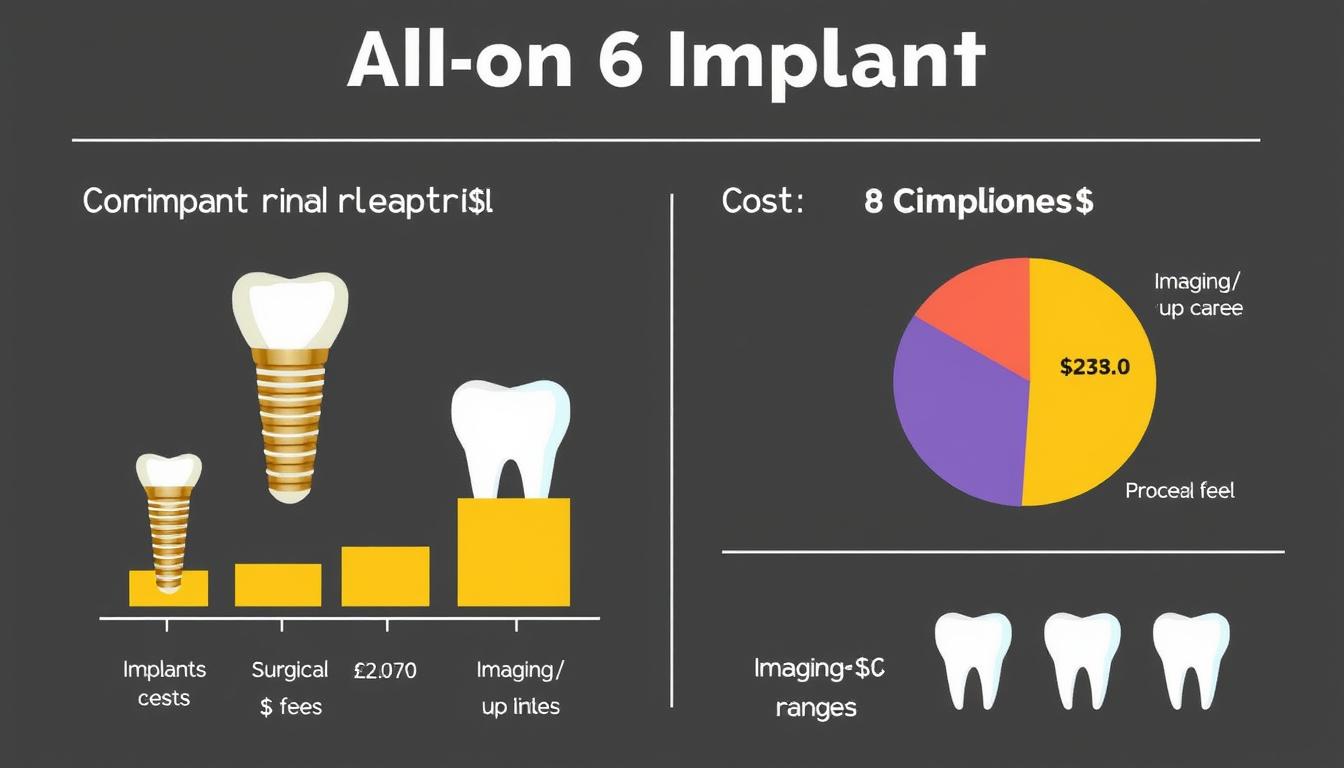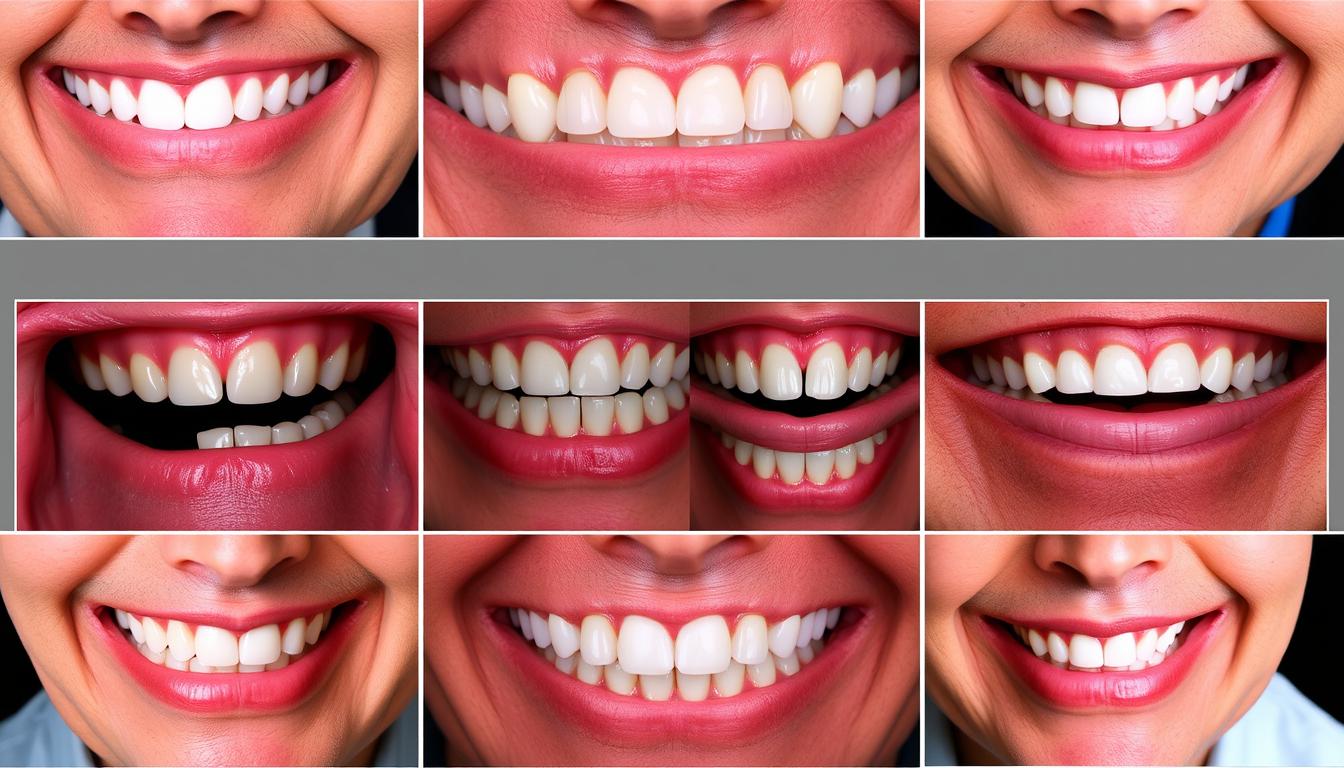Living with multiple missing teeth can significantly impact your quality of life, affecting everything from your ability to enjoy meals to your confidence when smiling. All on 6 dental implants offer a revolutionary solution for those seeking to restore a full arch of teeth with a permanent, natural-looking alternative to traditional dentures. This comprehensive guide explains how All on 6 implants work, their benefits compared to other options, and everything you need to know before considering this life-changing dental procedure.

What Are All on 6 Implants?
All on 6 implants represent an advanced dental restoration technique where an entire arch of prosthetic teeth (upper, lower, or both) is supported by six strategically placed dental implants. Unlike removable dentures that rest on your gums, this permanent solution anchors directly to your jawbone, providing stability and functionality that closely mimics natural teeth.
The “6” in All on 6 refers to the number of titanium implants surgically placed into the jawbone. These implants serve as artificial tooth roots that fuse with your natural bone through a process called osseointegration. Once integrated, they provide a strong foundation for attaching a custom-designed prosthetic arch containing 12-14 teeth.
This innovative approach allows for the replacement of an entire dental arch with fewer implants than would be needed for individual tooth replacement, making it more efficient and cost-effective for those missing most or all of their teeth in one arch.

All on 6 vs. All on 4 Implants: Key Differences
When exploring full-arch implant solutions, you’ll likely encounter both All on 4 and All on 6 options. While similar in concept, these approaches differ in several important ways that may influence which is right for your specific situation.
| Feature | All on 4 Implants | All on 6 Implants |
| Number of Implants | 4 implants per arch | 6 implants per arch |
| Stability | Good stability for normal use | Enhanced stability for stronger bite force |
| Bone Density Requirements | Works with less bone density | May require more available bone |
| Cost Range | $12,000-$24,000 per arch | $18,000-$35,000 per arch |
| Ideal For | Patients with significant bone loss | Patients with stronger bite or bruxism |
| Prosthetic Teeth | Usually 10-12 teeth | Full arch of 12-14 teeth |
The additional implants in the All on 6 approach provide greater support distribution, making it particularly beneficial for patients with powerful masticatory muscles or those who clench and grind their teeth. The extra support points also allow for a longer dental bridge that can include molars, providing complete chewing function. 4-in-1 Dental Implants: A Complete Guide to Full-Arch Restoration
Benefits of Choosing All on 6 Implants

Enhanced Stability and Function
With six implants supporting your new teeth, you’ll experience superior stability compared to traditional dentures or even All on 4 implants. This means you can bite and chew with confidence, enjoying virtually all foods without restrictions.
Bone Preservation
Dental implants are the only tooth replacement option that stimulates and preserves jawbone. The six implants provide broader stimulation across your jaw, preventing the bone resorption that typically occurs after tooth loss.
Natural Aesthetics
All on 6 restorations are custom-designed to complement your facial features, creating a natural-looking smile that’s virtually indistinguishable from natural teeth in appearance and function.
Long-Term Solution
With proper care, All on 6 implants can last 20+ years or even a lifetime. The titanium implants integrate with your jawbone, creating a permanent foundation for your new teeth.
Improved Quality of Life
Beyond the functional benefits, patients report significant improvements in self-confidence, speech clarity, and overall quality of life after receiving All on 6 implants.
Efficient Treatment
In many cases, patients can receive temporary teeth the same day as implant placement, meaning you’ll never have to go without teeth during the healing process.
Ready to Explore if All on 6 Implants Are Right for You?
Schedule a consultation with a certified implantologist to discuss your specific needs and determine if you’re a good candidate for this life-changing procedure.Schedule Free Consultation
The All on 6 Implant Procedure: Step by Step
Understanding what to expect during the All on 6 implant process can help ease any anxiety about the procedure. Here’s a breakdown of the typical treatment journey:

Initial Consultation and Planning
Your journey begins with a comprehensive examination including 3D imaging to assess your oral health, bone density, and anatomical structures. Your dentist will discuss your goals, explain your options, and create a personalized treatment plan.
Pre-Surgical Preparation
If needed, preliminary procedures such as tooth extractions, bone grafting, or treatment of gum disease may be performed to create optimal conditions for implant success. Some patients may require these steps weeks or months before implant placement.
Implant Surgery
During the surgical procedure, six titanium implants are precisely positioned in your jawbone. Many practices use computer-guided techniques for optimal placement. This is typically performed under local anesthesia with sedation options available for anxious patients.
Temporary Prosthesis Placement
In many cases, a temporary fixed bridge can be attached to the implants on the same day as surgery. This immediate-load approach, sometimes called “teeth in a day,” allows you to leave with functional, natural-looking teeth while your permanent restoration is being fabricated.
Healing and Osseointegration
Over the next 3-6 months, your implants will fuse with your jawbone through osseointegration. During this period, you’ll follow a modified diet and special oral hygiene instructions to ensure proper healing.
Final Restoration
Once healing is complete, your temporary prosthesis is replaced with your permanent, custom-designed restoration. This final prosthesis is typically made from high-quality materials like zirconia or porcelain for durability and natural aesthetics.

Are You a Good Candidate for All on 6 Implants?
While All on 6 implants can be life-changing for many patients, they’re not the right solution for everyone. Ideal candidates typically:
- Have lost most or all teeth in one or both arches
- Have adequate jawbone density or are willing to undergo bone grafting
- Are in good general health
- Don’t smoke or are willing to quit before and after surgery
- Have good oral hygiene habits
- Have realistic expectations about the procedure and outcomes
Certain conditions like uncontrolled diabetes, active gum disease, or certain autoimmune disorders may affect your candidacy. A thorough evaluation by a qualified implant specialist is the best way to determine if All on 6 implants are right for you.

Understanding All on 6 Implant Costs
The investment in All on 6 implants reflects their status as a premium, long-term solution for tooth replacement. While costs vary based on several factors, understanding what influences pricing can help you make an informed decision.

Average Cost Range
All on 6 implants typically cost between $18,000 and $35,000 per arch. For a full mouth restoration (both upper and lower arches), the total investment ranges from $36,000 to $70,000. While this represents a significant investment, it’s important to consider the long-term value compared to alternatives that may require frequent replacement.
Factors Affecting Cost
Geographic Location
Prices vary significantly based on your location, with major metropolitan areas typically commanding higher fees than rural locations.
Dentist’s Expertise
Specialists with advanced training and extensive experience in implantology often charge more, but may provide superior results and fewer complications.
Materials Used
The quality of implants and prosthetic materials significantly impacts cost. Premium options like zirconia prosthetics cost more than acrylic alternatives but offer better durability and aesthetics.
Insurance and Financing Options
While traditional dental insurance typically provides limited coverage for implant procedures, many practices offer financing solutions to make treatment more accessible:
- Third-party financing through companies like CareCredit or Lending Club
- In-house payment plans offered by dental practices
- Health Savings Accounts (HSAs) or Flexible Spending Accounts (FSAs)
- Dental discount plans that provide reduced fees for implant services
Many implant centers offer free consultations where you can discuss costs and financing options specific to your situation.
Concerned About Affording All on 6 Implants?
Don’t let financial concerns prevent you from exploring this life-changing treatment. Many dental practices offer flexible financing options and will work with you to make All on 6 implants affordable.Explore Financing Options
Caring for Your All on 6 Implants
Proper maintenance is essential for ensuring the longevity of your All on 6 implants. While they’re designed to be durable, they still require regular care to prevent complications and ensure optimal performance.
Daily Maintenance
- Brush twice daily with a soft-bristled toothbrush
- Use a water flosser to clean under the prosthesis and around implants
- Consider specialized cleaning tools designed for implant-supported restorations
Professional Care
- Schedule regular dental check-ups every 3-6 months
- Undergo professional cleanings designed specifically for implant maintenance
- Have your dentist periodically check the prosthesis for wear and proper fit

Frequently Asked Questions About All on 6 Implants
Is the All on 6 implant procedure painful?
The procedure is performed under anesthesia, so you won’t feel pain during surgery. Post-operative discomfort is typically manageable with prescribed pain medication and over-the-counter anti-inflammatories. Most patients report less pain than expected and find that discomfort subsides significantly within a few days after surgery.
How long do All on 6 implants last?
With proper care and maintenance, the titanium implants can last a lifetime. The prosthetic teeth may need replacement after 10-15 years due to normal wear and tear, though high-quality materials like zirconia can extend this timeframe. Regular dental check-ups help ensure the longevity of your restoration.
Can I get All on 6 if I’ve been told I don’t have enough bone?
Possibly. Advanced techniques like bone grafting, sinus lifts, or strategic implant placement can often overcome bone density issues. Additionally, some implant specialists use specialized implants designed for patients with bone loss. A comprehensive evaluation with 3D imaging is necessary to determine your specific options.
How do All on 6 implants compare to traditional dentures?
All on 6 implants offer significant advantages over traditional dentures, including better stability, no need for adhesives, preserved jawbone, improved chewing efficiency, and a more natural feel. While the initial investment is higher, many patients find the improved quality of life and long-term durability justify the cost difference.
Can I get All on 6 implants in one day?
Many practices offer “teeth in a day” protocols where implants and a temporary prosthesis are placed in a single appointment. However, the complete process, including planning and fabrication of the final restoration, takes several months. The temporary teeth allow you to have a functional smile while your permanent restoration is being created.
Patient Experiences with All on 6 Implants

“After years of struggling with ill-fitting dentures, my All on 6 implants have completely transformed my life. I can eat anything I want, speak clearly, and smile with confidence. The procedure was much more comfortable than I expected, and the results have exceeded all my expectations.”
– Michael, 62
“I was hesitant about the cost at first, but my All on 6 implants have proven to be the best investment I’ve ever made in myself. The difference in stability compared to my old dentures is night and day. I only wish I had done it sooner instead of wasting money on temporary solutions.”
– Sarah, 58
“After losing my teeth to periodontal disease, I thought I’d never smile confidently again. The All on 6 procedure gave me back not just my smile, but my self-esteem. The recovery was easier than I anticipated, and now I can enjoy all my favorite foods without worry.”
– Robert, 67
Take the First Step Toward Your New Smile
All on 6 dental implants offer a life-changing solution for those missing most or all of their teeth. With their stability, natural appearance, and long-term durability, they represent an investment in both your oral health and quality of life.
The journey begins with a comprehensive consultation with a qualified implant specialist who can evaluate your specific situation and determine if All on 6 implants are right for you.
What to expect during your consultation:
- Comprehensive oral examination
- 3D imaging to assess bone structure
- Discussion of treatment options
- Personalized treatment plan
- Cost estimate and financing options
Request Your Free Consultation
Full NamePhone NumberEmail AddressYour Dental ConcernsSchedule Free Consultation
Or call us directly at 1-800-123-4567
Conclusion: Is All on 6 Right for You?
All on 6 dental implants represent a significant advancement in full-arch tooth replacement, offering stability, functionality, and aesthetics that closely mimic natural teeth. While they require a higher initial investment than some alternatives, their durability and quality-of-life benefits make them a cost-effective long-term solution for many patients.
The decision to proceed with All on 6 implants should be made after careful consideration of your specific oral health needs, lifestyle factors, and financial situation. A consultation with a certified implantologist is the best way to determine if this treatment is right for you and to develop a personalized plan for restoring your smile and confidence.
Ready to Transform Your Smile with All on 6 Implants?
Take the first step toward a permanent solution for missing teeth. Schedule your consultation today to learn if All on 6 implants are the right choice for your dental restoration needs.
